Introduction
When it comes to creating the perfect roast beef recipe, nothing beats the satisfaction of serving a beautifully cooked piece of meat. Whether you’re hosting a Sunday dinner or celebrating a special occasion, roast beef remains a timeless favorite. This article will guide you through a tried-and-true recipe, ensuring your roast beef is tender, juicy, and full of flavor.
Historical Background
Roast beef recipe has a rich history, being a staple in various cultures for centuries. In England, it’s traditionally served with Yorkshire pudding and vegetables, making it a beloved part of Sunday roasts. The French, on the other hand, prefer their roast beef with a touch of sophistication, often pairing it with rich sauces. Learning about these traditions can enhance your appreciation and technique when preparing your own roast beef at home. For more on traditional methods, check out BBC Good Food’s Roast Beef Recipes.
Tease the Recipe
This roast beef recipe promises a tender, flavorful result that will impress your guests. Using a simple blend of kosher salt, garlic powder, and freshly ground black pepper, this recipe highlights the natural flavors of the beef. Preheating your oven to 375°F and allowing the roast to come to room temperature are crucial steps to ensure even cooking. For a comprehensive guide on mastering the perfect roast, check out the Serious Eats Roast Beef Guide.
Stay tuned as we dive into the specific details of the ingredients, preparation, and cooking techniques in the following sections. This guide provides you with all the tools and knowledge necessary to create a delicious and unforgettable roast beef. Whether you are a novice or a seasoned cook, this best roast beef recipe will become a staple in your culinary repertoire.
Basic Roast Beef Recipe
Print
Classic Roast Beef Recipe
- Total Time: 90 minutes
- Yield: 6 servings 1x
- Diet: Gluten Free
Description
This classic roast beef recipe is straightforward and delicious, perfect for any occasion. With just a few simple ingredients, you can create a flavorful and tender roast that will impress your family and friends.
Ingredients
- 3 pounds beef eye of round roast, at room temperature
- ½ teaspoon kosher salt, or more to taste
- ½ teaspoon garlic powder, or more to taste
- ¼ teaspoon freshly ground black pepper, or more to taste
Instructions
- Preheat your oven to 375°F (190°C).
- Season the beef roast evenly with kosher salt, garlic powder, and freshly ground black pepper.
- Place the roast on a rack in a roasting pan to ensure even heat distribution.
- Roast in the preheated oven for 60-75 minutes, or until the desired doneness is reached (use a meat thermometer for accuracy).
- Let the roast rest for 15-20 minutes before slicing. This step is crucial to allow the juices to redistribute, ensuring a juicy roast.
Notes
- To achieve a perfect crust, make sure the roast is dry before seasoning.
- Resting the meat is essential for retaining its juices. Slice against the grain for the best texture.
- Prep Time: 15 minutes
- Cook Time: 75 minutes
- Category: Main Course
- Method: Roasting
- Cuisine: American
Nutrition
- Serving Size: 1 serving
- Calories: 200
- Sugar: 0g
- Sodium: 150mg
- Fat: 10g
- Saturated Fat: 3g
- Unsaturated Fat: 7g
- Trans Fat: 0g
- Carbohydrates: 0g
- Fiber: 0g
- Protein: 25g
- Cholesterol: 75mg
Keywords: Roast Beef Recipe
This roast beef recipe is not only delicious but also easy to prepare, making it a go-to for both special occasions and everyday meals. For more roast beef recipes, visit Food Network Perfect Roast Beef.
STEPS
Step 1:
Gather all ingredients.
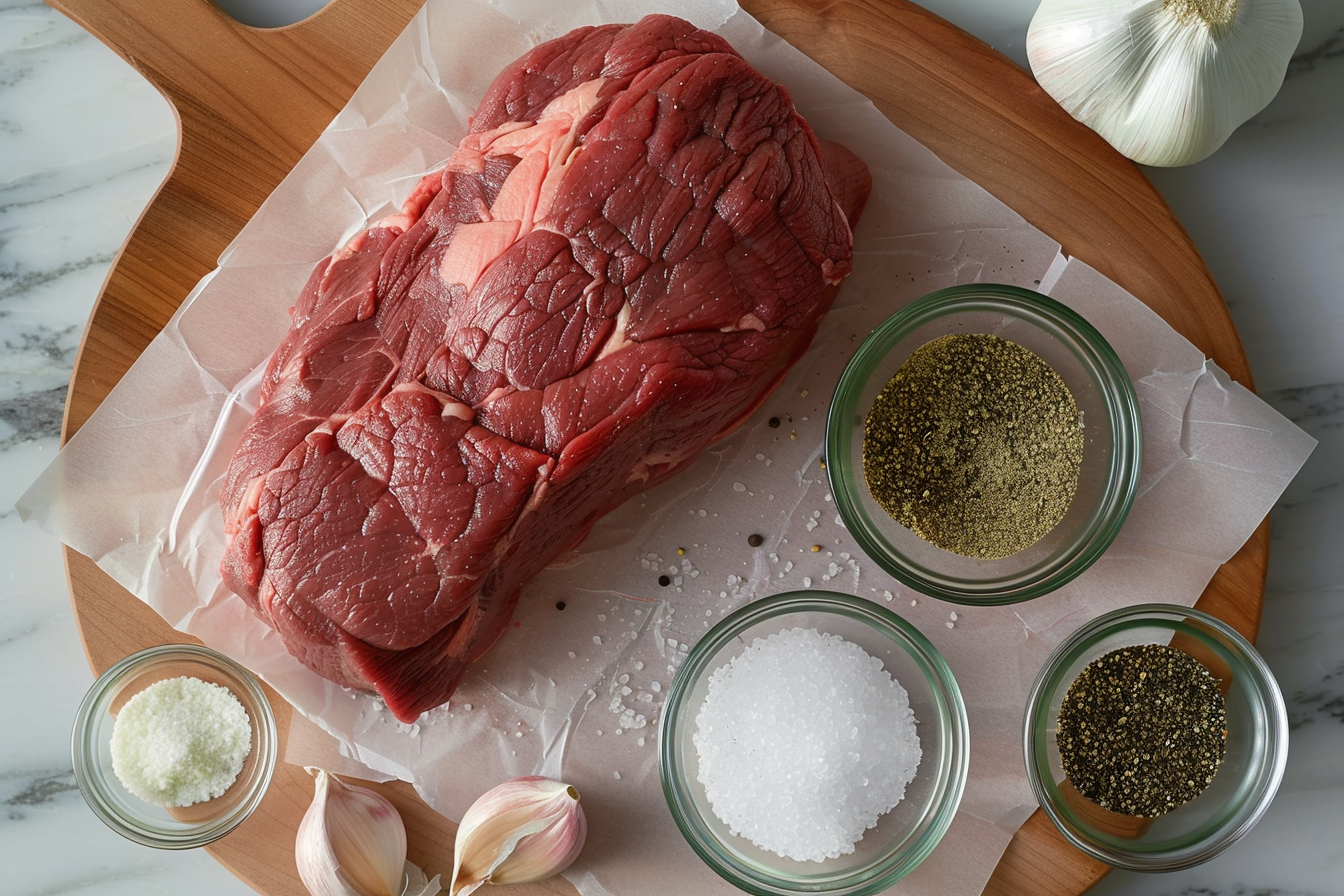
Step 2: Set your oven to 375 degrees Fahrenheit (190 degrees Celsius) to preheat.
Step 3: Ensure the roast is at room temperature. Secure the roast every three inches with cotton string to prevent it from drying out and to promote even cooking. Position the roast on a rack inside a roasting pan.
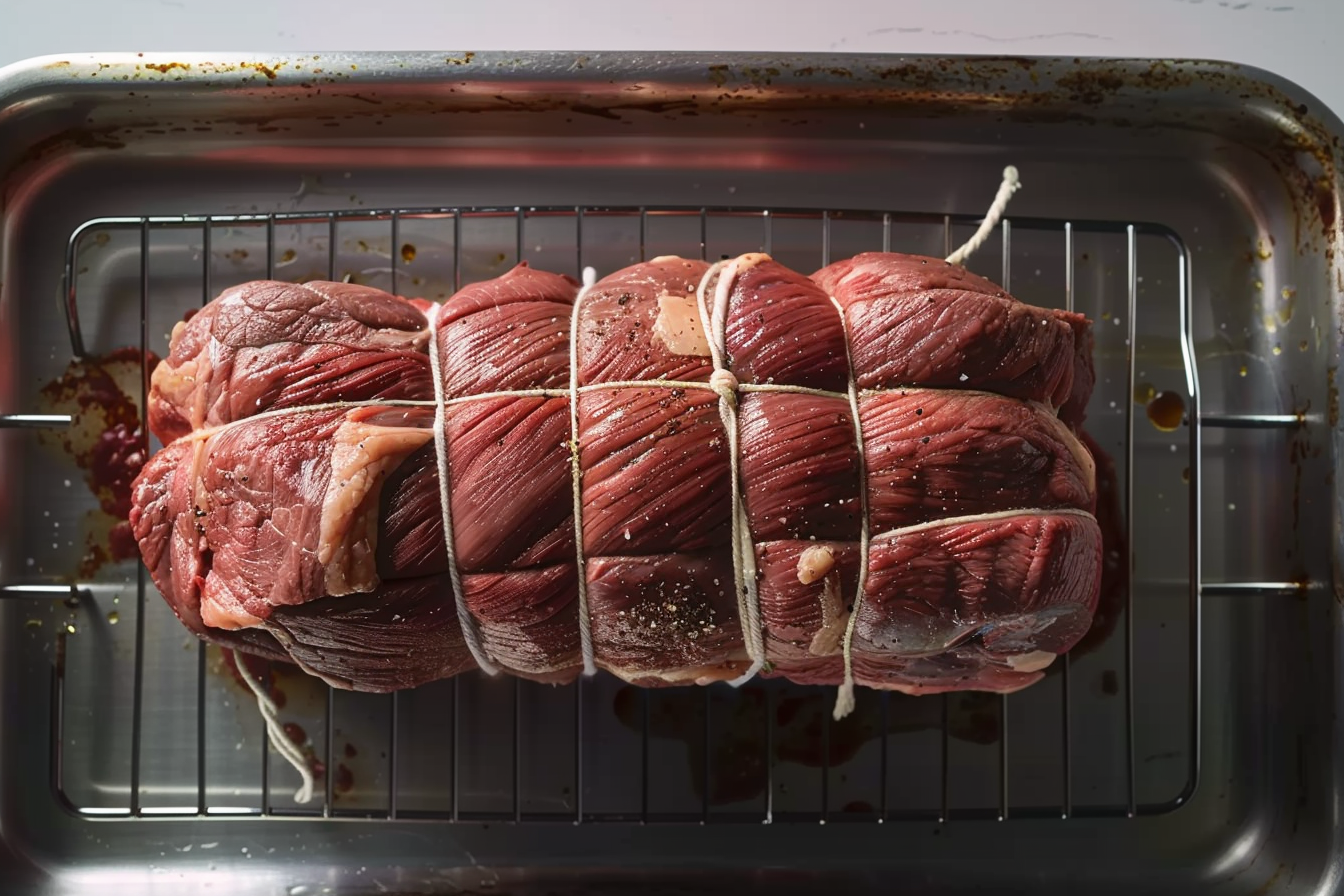
Step 4: Combine salt, garlic powder, and pepper in a small dish. Massage the seasoning blend into the meat thoroughly.
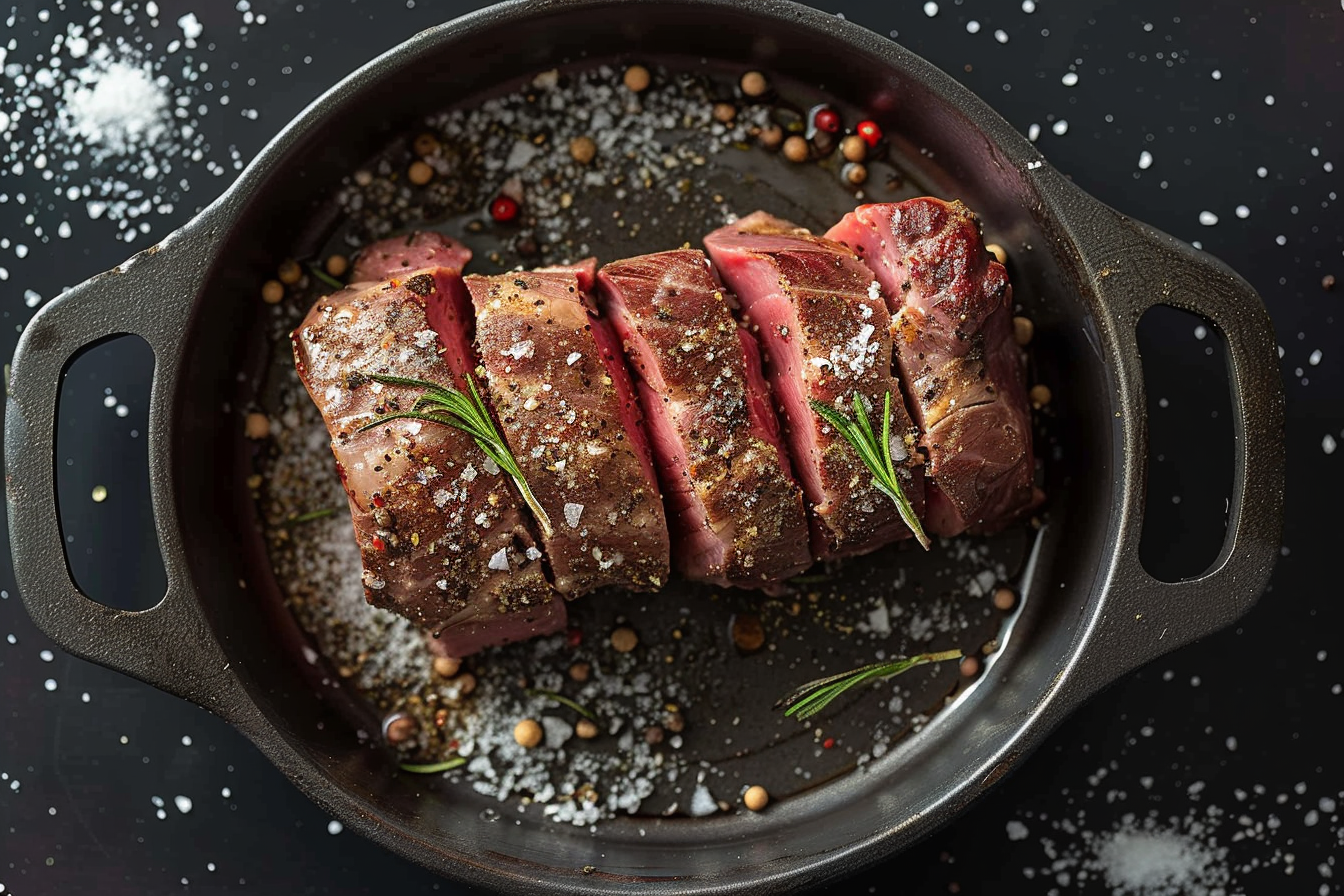
Step 5: Put it into the already heated oven and cook for 60 minutes, or 20 minutes for each pound if your roast is bigger or smaller. Insert an instant-read thermometer into the middle of the roast; it should show a temperature of 120 to 125 degrees Fahrenheit (49 to 52 degrees Celsius).
Step 6: Take out of the oven and move to a cutting board. Loosely tent with foil and allow it to rest for 15 to 20 minutes to let the juices settle back throughout the meat.
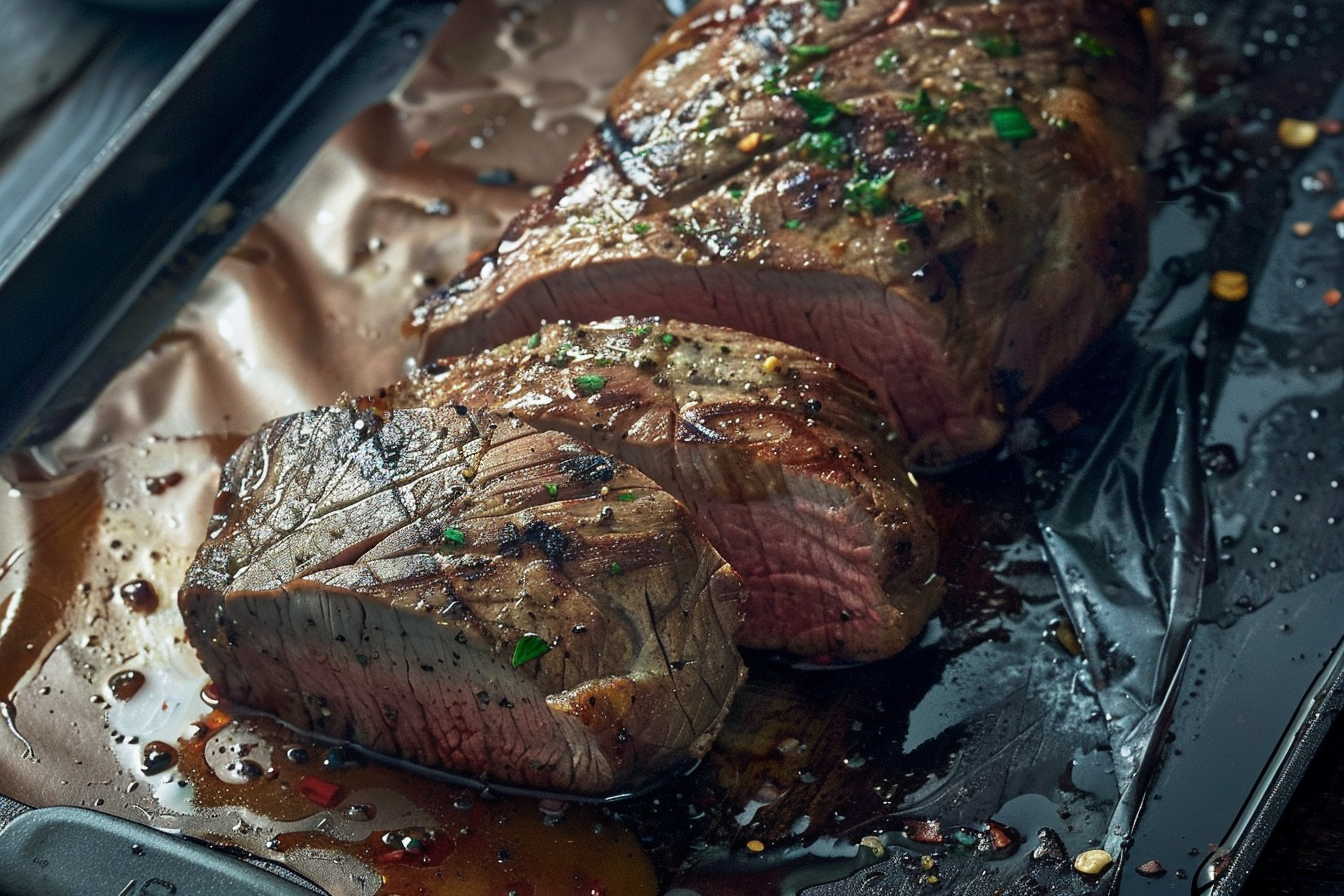
Step 7: Cut and dish out.
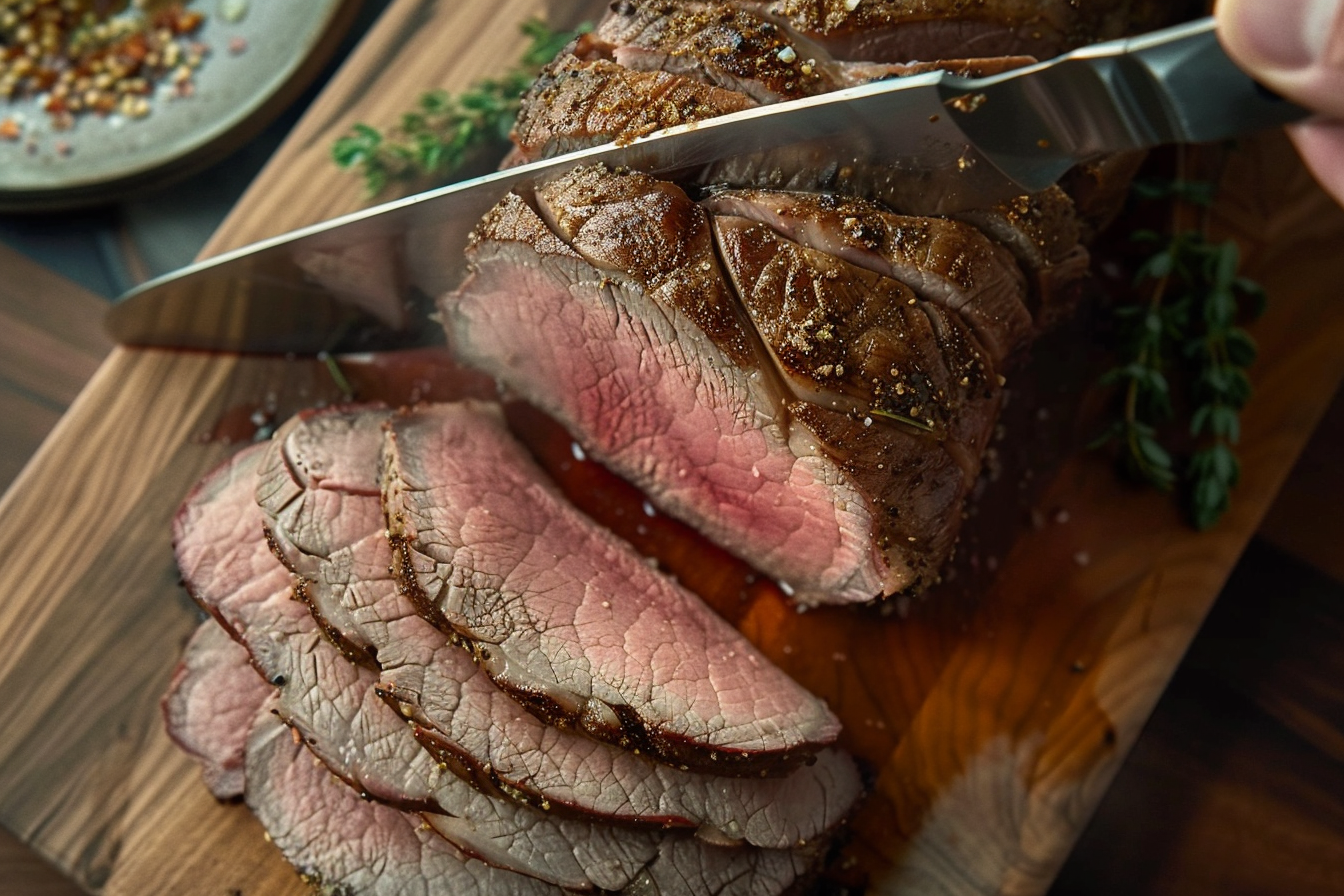
Advanced Techniques for Perfect Roast Beef Recipe
Marinating for Extra Flavor
To elevate your roast beef recipe, consider marinating the beef for added flavor and tenderness. An uncomplicated mix of olive oil, soy sauce, garlic, and herbs can remarkably enhance flavors. Let the beef soak in the marinade within a tightly sealed container for a minimum of four hours, or ideally overnight, in the fridge. This process infuses the meat with robust flavors and ensures a juicy outcome. It’s essential to dry the beef thoroughly before roasting to form an impeccable crust.
Cooking Methods
Different cooking methods can yield varied results. Traditional roasting in an oven at 375°F is a straightforward approach. For a more controlled cook, try the reverse searing method. First, slow roast the beef at a low temperature (250°F) until it reaches an internal temperature of 120°F. Briefly brown the roast in a heated skillet on each side to create a rich, flavorful crust.
Alternatively, the sous-vide method offers precise temperature control. Encase the seasoned beef in a vacuum-sealed bag and sous-vide it in a water bath maintained at 135°F to achieve medium-rare perfection. For a flawless crust, give the roast a quick sear in a scorching pan.
Resting and Carving
Allowing the roast beef to rest is key to keeping it juicy and succulent. Post-roasting, let the beef stand for 15-20 minutes on a cutting board without covering it. This resting period helps the juices to reabsorb into the meat. When slicing, ensure you cut across the muscle fibers using a sharp knife. This technique ensures tender slices that melt in your mouth.
To explore more culinary techniques and perfect your roast beef recipe, visit Cooking White for additional tips and recipes. This site provides extensive resources on sophisticated cooking techniques that can elevate your kitchen prowess.
In summary, mastering these advanced techniques can transform a basic roast beef into a gourmet dish. Whether you marinate, use the reverse sear method, or try sous-vide, these methods will ensure a flavorful and tender roast beef every time.
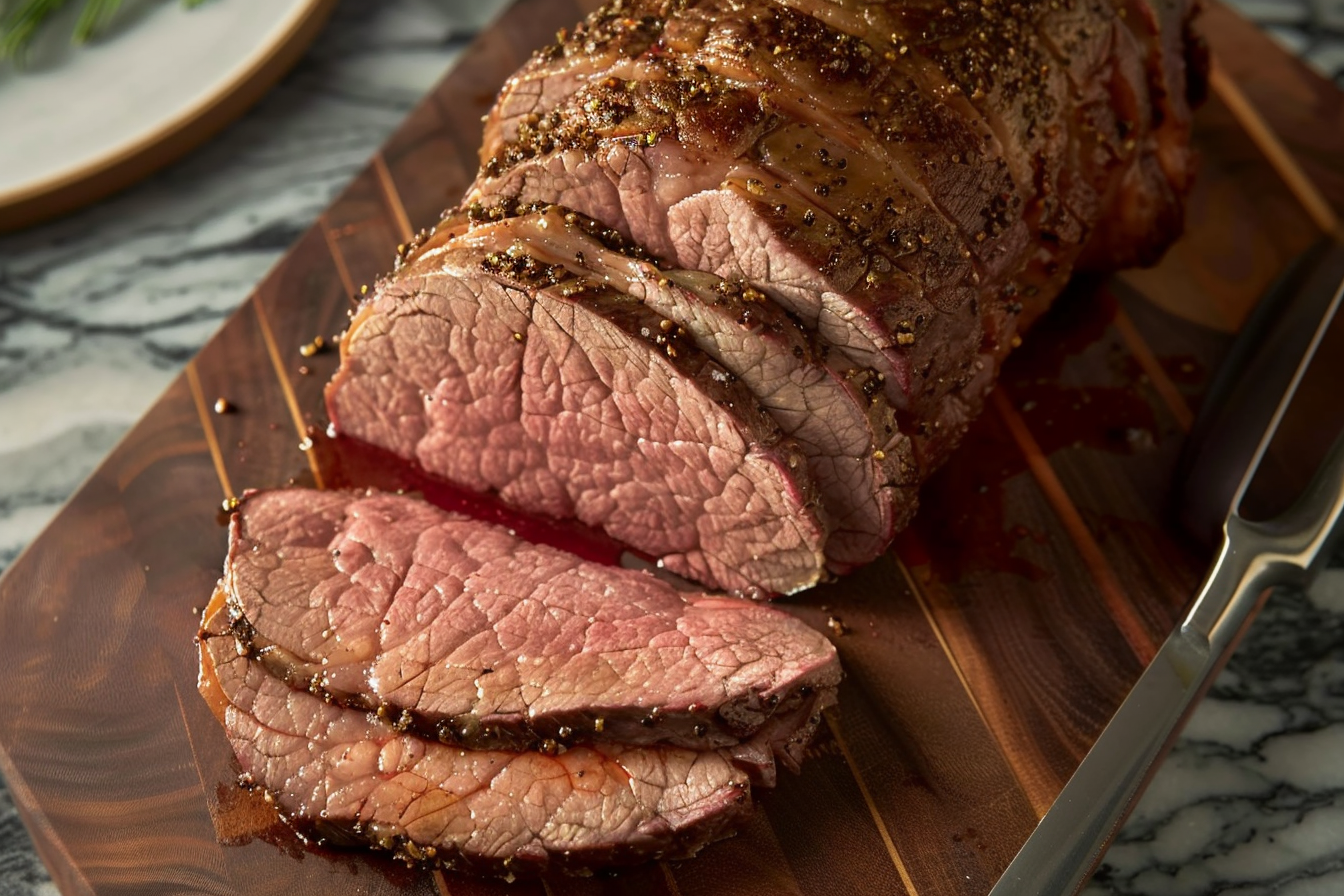
Maintenance Tips
Storing Leftovers
Properly storing leftovers is essential to maintain the quality of your roast beef recipe. After the roast cools down, encase it securely in aluminum foil or store it in a sealed container. Refrigerate the leftovers within two hours of cooking to prevent bacterial growth. Stored correctly, the roast beef will last for 3-4 days in the refrigerator. For longer storage, consider freezing the leftovers. Segment the beef into slices or chunks, enwrap each piece in cling film, and then deposit them into a freezer bag. Properly stored, frozen roast beef can last up to three months.
Warming Up Without Losing Moisture
To reheat roast beef without it becoming dry can pose a challenge. To maintain its juiciness, reheat the beef in the oven. Preheat the oven to 250°F. Place the beef slices in a baking dish, add a splash of beef broth or water, and cover with foil. Warm it for approximately 20-30 minutes, or until it reaches the desired temperature. Alternatively, the beef can be warmed up in a microwave. Arrange the beef slices on a plate suitable for microwave use, cover with a moist paper towel, and heat at a medium setting in brief bursts until heated.
Using Leftovers Creatively
Leftover roast beef can be used creatively in various dishes, making the most of your roast beef recipe. For sandwich preparation, cut the beef into thin slices and enhance with horseradish sauce or mustard to enrich the flavor. Chop it into cubes and add to a hearty vegetable soup or stew. Leftover roast beef also works well in salads, providing a protein boost and rich flavor. For a quick and tasty meal, use the beef in tacos or wraps with your favorite toppings. These methods guarantee that your leftover roast beef is not only well-preserved but also revitalized into delightful new meals.
By following these maintenance tips, you can enjoy the benefits of your roast beef recipe long after the initial meal. Proper storage, careful reheating, and creative use of leftovers will help you make the most of this classic dish.
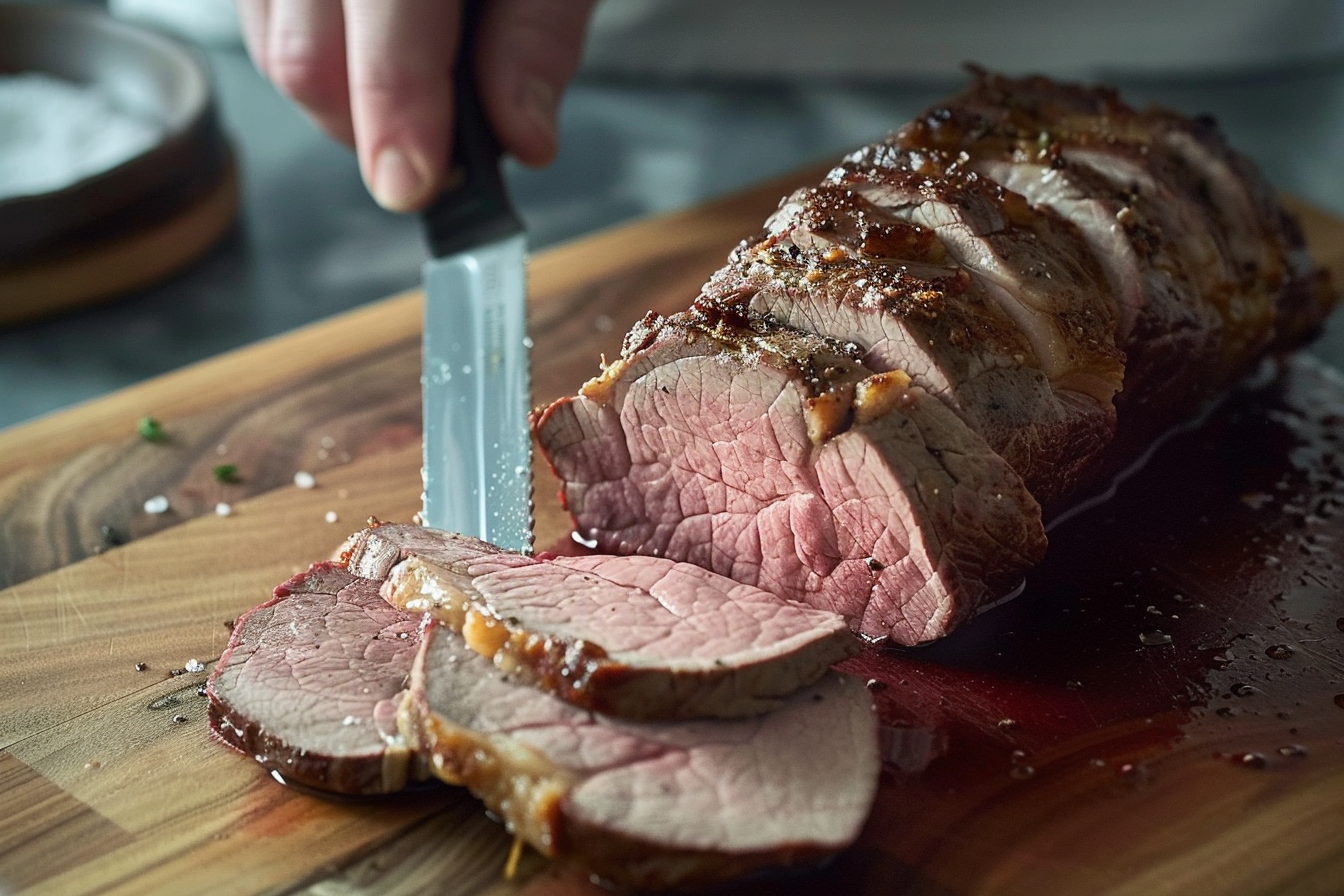
Nutritional Modifications
Gluten-Free Diets
This roast beef dish is inherently free from gluten, making it a superb option for individuals with gluten intolerance When preparing side dishes, ensure they are also gluten-free. Accompany the meal with choices of roasted vegetables, mashed potatoes, or a vibrant garden salad. Avoid any seasoning blends or sauces that may contain hidden gluten. Always check labels carefully to maintain a completely gluten-free meal.
Low-Carb/Keto Adaptations
For those following a low-carb or keto diet, this roast beef recipe fits perfectly. The beef itself contains zero carbohydrates, making it ideal for low-carb eating plans. Pair the roast with keto-friendly sides like cauliflower mash, sautéed spinach, or roasted Brussels sprouts. These accompanying dishes are not only low in carbohydrates but also rich in nutrients, enhancing the robust flavors of the beef. Avoid starchy vegetables and high-carb sauces to keep the meal keto-compliant.
Other Dietary Considerations
If you’re aiming to reduce sodium intake, adjust the amount of salt in the seasoning. Enhance the dish with herbs and spices to boost flavor while keeping sodium levels low. To prepare a version with less fat, cut away any apparent fat from the roast before cooking. You can also opt for a leaner cut of beef, such as sirloin or tenderloin, which will still yield a delicious result.
For those concerned with overall calorie intake, serve the roast with lighter sides. Pair with steamed vegetables or a basic green salad to round out the meal without excess calories.
This roast beef recipe is flexible and can be customized to accommodate diverse nutritional requirements. By making a few simple adjustments, you can enjoy this classic dish while adhering to your specific dietary preferences. Whether you’re gluten-free, low-carb, or watching your sodium, this recipe can be tailored to suit your lifestyle without compromising on flavor.
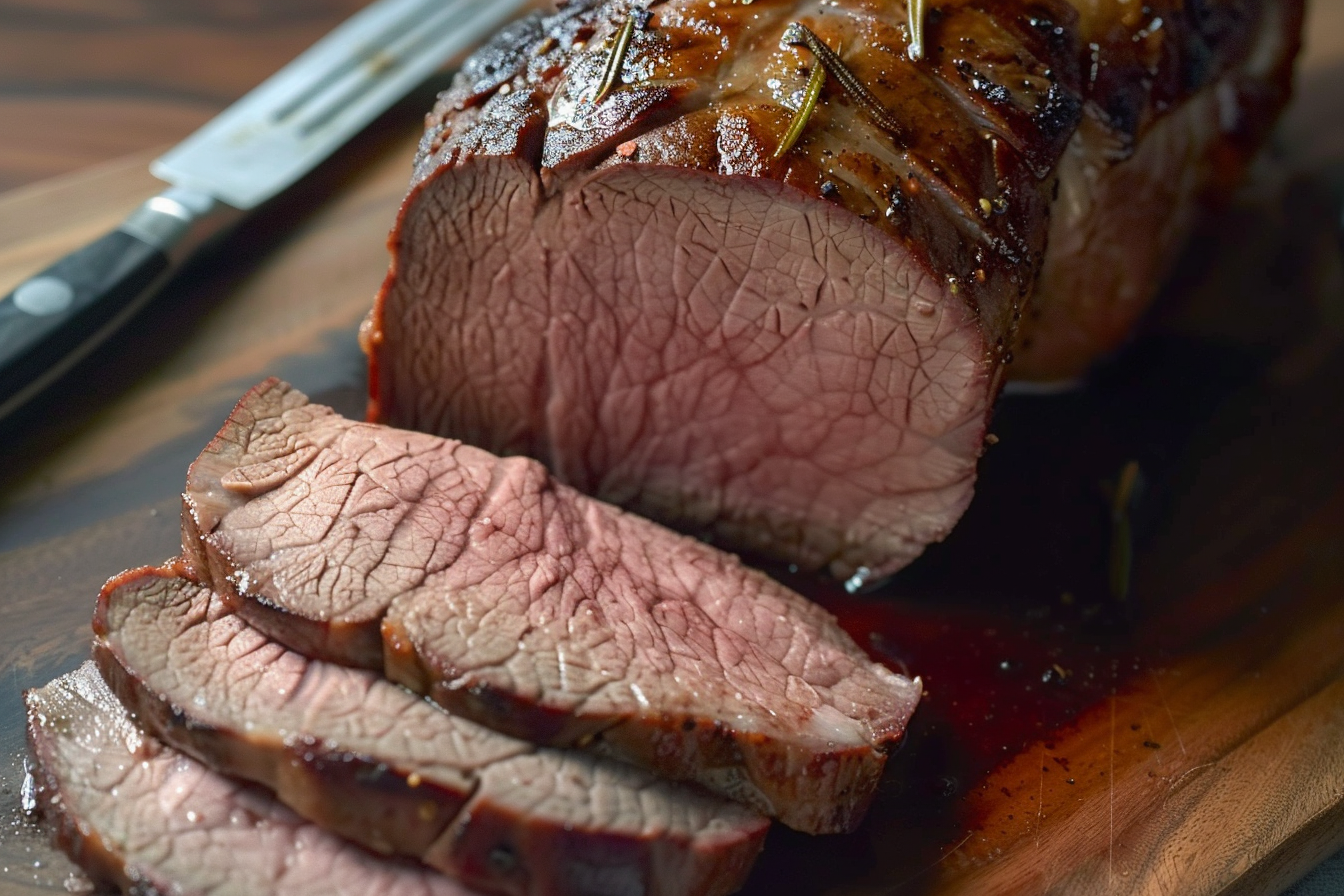
FAQs
Common Questions
Many people have questions about making the perfect roast beef recipe. One frequent query is about choosing the right cut. The eye of round beef roast is widely preferred for its flavorful tenderness. A frequent query is how to ensure the roast reaches the preferred level of doneness. The optimal method to ascertain this is by using a meat thermometer. Insert the thermometer into the densest section of the roast to measure the temperature.
Troubleshooting
Sometimes, issues arise when preparing a roast beef recipe. If your roast turns out too tough, it may have been overcooked. To prevent overcooking, keep a vigilant eye on the internal temperature. If the roast is too dry, resting it longer can help retain juices. Also, using a marinade can enhance moisture and flavor.
Another problem might be uneven cooking. This can occur if the oven temperature fluctuates or the roast isn’t positioned properly. Ensure your oven is preheated correctly and use a roasting rack to allow even air circulation.
Additional Tips
Enhancing your roast beef recipe can be simple with a few extra tips. To enrich the taste, season the roast a day prior and refrigerate overnight. This process allows the seasonings to thoroughly infuse the meat.
Ensure to slice the roast against the grain for optimal texture. This technique breaks up muscle fibers, resulting in more tender slices. To introduce an additional layer of taste, try creating a straightforward pan sauce from the roast drippings. Use beef broth or red wine to deglaze the roasting pan, then simmer until the sauce thickens slightly.
By addressing common questions and troubleshooting issues, you can master the roast beef recipe and impress your guests with a perfectly cooked roast every time. These tips ensure your roast is flavorful, juicy, and cooked to perfection.
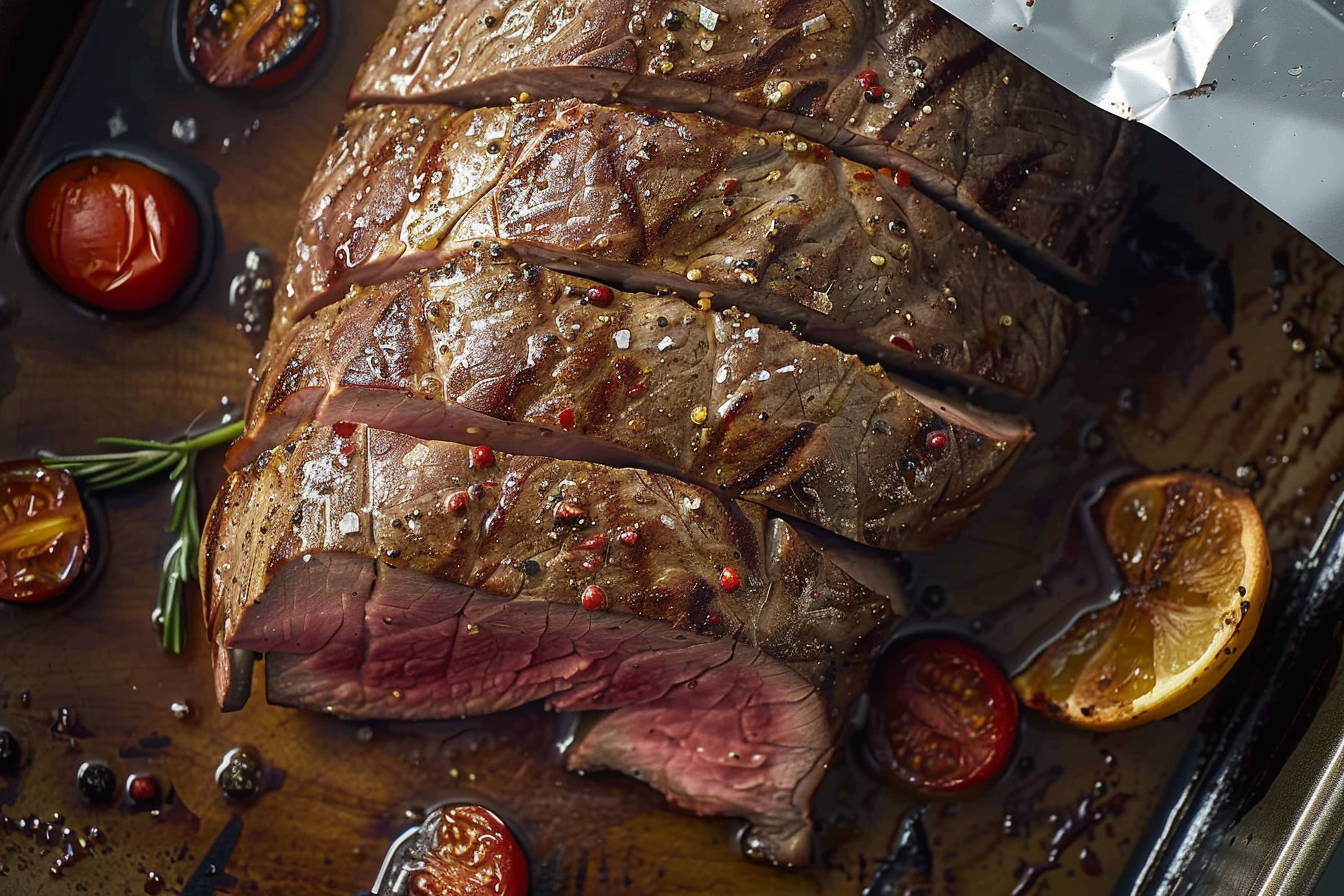
External Resources
Further Reading and Recipes
For those looking to expand their culinary repertoire, exploring additional resources can be highly beneficial. Various cooking websites offer detailed guides and recipes to help you perfect your roast beef recipe and explore new variations.
Expert Techniques and Tips
Diving deeper into advanced cooking methods can significantly enhance your roast beef recipe. Websites like Serious Eats provide in-depth articles and expert advice on different roasting techniques, ensuring you achieve the perfect roast every time. These materials are extremely beneficial for both novice and seasoned chefs.
Additional Recipes
Trying out various recipes can introduce delightful new tastes to your meals. Websites such as Food Network and BBC Good Food offer a plethora of roast beef recipes, each with unique twists and techniques. These sites offer detailed guidance, simplifying the process of crafting tasty dishes.
Conclusion
To perfect the roast beef recipe, one must grasp the fundamentals, delve into more sophisticated methods, and resolve typical problems. By utilizing additional resources, you can expand your skills and experiment with various flavors and methods. Whether you are a novice or a seasoned chef, there is always something new to learn and enjoy in the world of cooking.
Invitation to Engage
We encourage you to try out this roast beef recipe and share your experiences. Please do not hesitate to post comments and ask questions, as your insights assist us in enhancing our offerings and delivering superior content. Engaging with other cooking enthusiasts can also offer new insights and tips, making the cooking experience more enjoyable.
By following the guidelines and tips provided in this article, you are well on your way to creating a perfect roast beef dish that will impress your family and friends. Enjoy the process, and happy cooking!
